Reading guide
We should not only look at the starry sky (6g), but also be down-to-earth (5g).
2020 is coming to an end. With the construction of 5g network and the freezing of 3GPP R16, more and more people will focus on 6G.
On July 14, South Korea's Samsung Electronics released a white paper, "the next generation of hyper connected experience.". In the white paper, Samsung estimates that the earliest time point for the completion and commercialization of 6G standard is 2028, while large-scale commercialization may occur around 2030.
This forecast time point is very close to that given by ZTE at the second 6G wireless Summit Conference on March 17
From the perspective of social and technological trends, 6G will have the following significant characteristics:
· both people and machines will be 6G users (and machines will be the primary users of 6G instead).
AI will penetrate into all walks of life, such as finance, health, industrial manufacturing and other fields. 6G will further improve its performance and reduce CAPEX and OPEX through AI.
· 6G will make communication technology more open (such as the o-ran alliance established in recent years).
The 6G will play a key role in many social issues. For example, addressing climate change (combined with digital technology to reduce greenhouse gas emissions) and addressing educational inequality (distance education), 5g has provided some help. The hyperconnectivity provided by 6G will further assist in achieving the 2030 sustainable development goal proposed by the United Nations.
From the perspective of service, what will 6G bring?
6G will further enhance the embB, urllc, mmtc and other features defined by 5g, and integrate more advanced sensing, imaging, display and AI technologies to provide hyperconnectivity experience, such as:
· immersive extended reality (XR)
High fidelity mobile hologram
Digital image (Digital twin)
What is digital twins
6G must meet the requirements
To achieve a hyper connected experience, 6G must meet the requirements from three dimensions: performance, architecture and credibility.
6G performance requirements
What is the performance improvement of 6G compared with 5g? As follows:
The peak data rate is 1tbps (1000gbps), which is 50 times of 5g
The air port delay is less than 100 microseconds (μ s), which is one tenth of 5g
Reliability of 10-7, 100 times of 5g
The equipment connection density reaches 107 / km2, which is ten times of 5g
- twice the spectrum efficiency of 5g
The spider web model is drawn as follows:
6G architecture requirements
To solve the problem caused by the limited computing power of mobile devices, realize the real integration of communication and computing, so that all kinds of devices of end users can make seamless use of the available computing power in the network, such as introducing AI (or called native AI) from the early stage of technology development.
Flexible integration of new network functions, including integration with non terrestrial networks, such as aircraft, Leo and geo satellites, high altitude platforms, etc.
6G credibility requirements
To solve the security and privacy problems caused by the wide use of user data and AI technology.
Key technology development direction of 6g
Some typical candidate technologies for 6G are as follows:
Terahertz band (THz)
5g NR has begun to discuss working in the frequency band above 52.6ghz. Following this trend, mobile communication in 6G era will inevitably use terahertz THz band.
However, there are some technical challenges that must be overcome in the actual use of THz band, such as:
(1) Propagation characteristics (serious path loss and atmospheric absorption): it is necessary to establish a multi-path channel model suitable for THz in indoor and outdoor scenarios.
(2) Chip and RF devices: over the past decade, researchers have been working on chip level terahertz technology. Now, based on InP, GaAs, SiGe, and even CMOS technologies, some breakthroughs have been made in the lower THz frequency band. However, in the higher THz band, further breakthroughs are needed to meet the requirements of high efficiency, low energy consumption and low cost.
(3) Antenna and beam shaping: Terahertz means a sharp increase in path loss. Therefore, a large-scale antenna array is needed to compensate the path loss. On the other hand, it will lead to very narrow thin beam (similar to laser beam), so how to optimize beam forming and improve the performance of the system with reasonable cost and energy efficiency is also very important.
(4) New waveforms, signals, channels and protocols: at present, OFDM will still be a candidate, but we need to explore new alternative waveforms, reduce PAPR, and meet the hardware limitations of THz. In addition, it is necessary to develop appropriate signals, channels and protocols to adapt THz operations effectively.
New antenna technology
5g NR has used massive MIMO technology, but THz band needs more antennas than millimeter wave, so there will be more challenges. Here are some options:
(1) Antenna and RF front end based on metamaterials
In the first method, the hypersurface lens is applied to the antenna array signal as a phase-shifting structure, and DC bias is applied to adjust the beam direction, which helps to sharpen the beam shape.
The second method: the metamaterial antenna, as a resonant antenna, radiates directional beam by itself. Unlike the super surface lens, it does not need an independent antenna array with phase shifter.
The third method: Reconfigurable Intelligent surface (RIS). Generally speaking, intelligent surface can change the electromagnetic characteristics of electromagnetic waves, thus affecting the surrounding propagation environment.
(2) Orbital angular momentum (OAM)
In 1992, scientists confirmed through experiments that photons have the basic property of orbital angular momentum OAM.
This angular momentum is the core of OAM
导 读
既要仰望星空(6G),也要脚踏实地(5G)。
2020年行将结束,随着5G网络的建设推进,以及3GPP R16版本的冻结,越来越多的人将关注焦点转移到6G身上。
7月14日,韩国三星电子发布了白皮书《下一代超连接体验》。在白皮书中,三星预估6G标准完成及投入商业化的最早时间点是2028年,而大规模商业化可能发生在2030年左右。
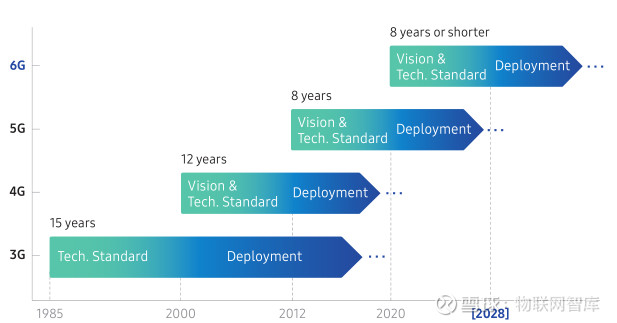
这个预测时间点,和3月17日全球第二届6G Wireless Summit会议上中兴通讯给出的预测时间点非常接近:
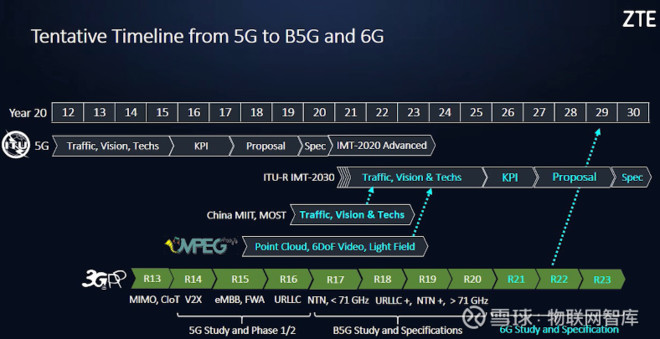
从社会和技术的大趋势来看,6G将具有以下显著的特点:
• 人和机器都将是6G的用户(并且机器反而会是6G的首要用户)。
• AI将会渗透到各行各业,比如金融,健康,工业制造等领域,6G将会通过AI来进一步提升性能并且降低CAPEX和OPEX。
• 6G将会使通信技术变得更加开放(比如近年成立的O-RAN联盟等)。
• 6G将会在诸多社会问题方面发挥关键作用。例如应对气候变化(与数字技术结合减少温室气体排放量)和解决教育不平等(远程教育)等问题,5G已经为此提供了一些帮助。6G提供的超连接,将会进一步协助完成联合国提出的2030可持续发展目标。
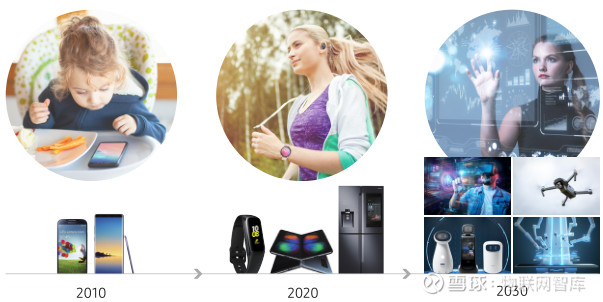
站在服务的角度,6G又会带来什么呢?
6G将进一步增强5G定义的eMBB、URLLC、mMTC等特性,并且融合更加先进的传感、成像、显示和AI等技术,提供超连接体验,比如:
• 沉浸式扩展现实(XR)

• 高保真移动全息影像

• 数字镜像(数字孪生)

(延伸阅读:什么是数字孪生?)
6G必须满足的要求
想要实现超连接体验,6G必须满足来自三个维度的要求,分别是性能、架构和可信度。
6G性能需求
相比5G,6G会有怎样的性能提升?如下所示:
• 峰值数据速率1Tbps(1000Gbps),是5G的50倍
• 空口延迟小于100微秒(μs),是5G的十分之一
• 可靠性达到10-7,是5G的一百倍
• 设备连接密度达到107/Km2,是5G的十倍
• 频谱效率达到5G的两倍
绘制成蜘蛛网模型,大致如下:
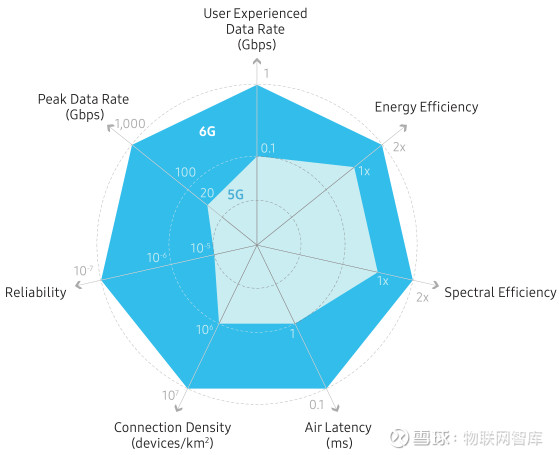
6G体系结构需求
解决移动设备计算能力有限所带来的问题,实现通信和计算的真正融合,以便最终用户的各种设备能够无缝地利用网络中可用的计算能力,比如从技术开发的初期就引入AI(或者称为原生AI)。
新的网络功能的灵活集成,包括和非地面网络的集成,比如飞机、近地轨道和地球静止轨道卫星、高空平台等。
6G可信度需求
解决用户数据和AI技术的广泛使用而带来的安全和隐私问题。
6G的重点技术发展方向
6G的一些典型候选技术如下:
太赫兹频段(THz)
5G NR已经开始讨论在52.6GHz以上的频段工作,遵循这一趋势,6G时代移动通信恐怕将不可避免地使用太赫兹THz频段。

但是实际使用THz频段,有一些必须克服的技术挑战,例如:
(1)本身的传播特性(严重的路径损耗和大气吸收):需要针对室内和室外的场景建立适合THz的多径信道模型。
(2)芯片和射频器件:过去十年,研究者们致力于开发芯片级的太赫兹技术,现在基于InP、GaAs、SiGe、甚至CMOS技术已经在较低的THz频段产生了一些突破。但是在更高的THz频段,还需要进一步突破,以满足高效率、低能耗和低成本需求。
(3)天线和波束赋形:太赫兹意味着路径损耗的急剧增加。因此,需要超大规模的天线阵列来补偿路径损耗。另一方面,这会导致非常狭窄的细波束(类似于激光波束),因此如何优化波束赋形,以合理的成本和能效来提升系统的性能也非常重要。
(4)新的波形、信号、信道和协议:目前来看OFDM依然会是一个候选项,但是需要去探索新的备选波形,降低PAPR,满足THz的硬件限制。另外,还需要开发合适的信号、信道和协议来有效地适配THz的各种操作。
新型天线技术
5G NR已经使用Massive MIMO技术,但是THz波段需要比毫米波更多的天线,因此会有更大的挑战,以下是一些可选项:
(1)基于超材料的天线和射频前端
第一种方法:将超表面透镜作为移相结构应用于天线阵列信号,施加直流偏置来调整波束方向,有助于锐化波束形状。
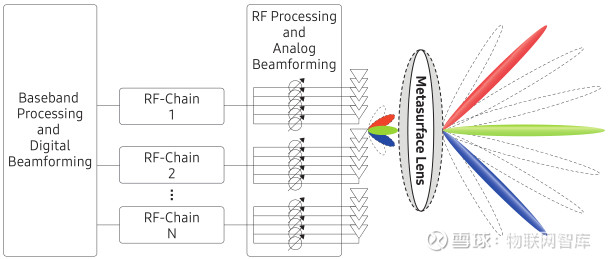
第二种方法:超材料天线作为谐振天线,其自身辐射定向波束,与超表面透镜不同,它不需要一个带移相器的独立天线阵列。
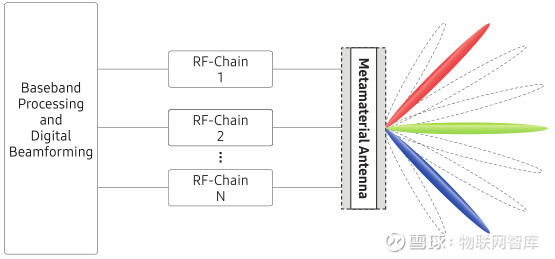
第三种方法:可重构智能表面(RIS),通俗的讲,智能表面可以改变电磁波的电磁特性,从而影响周围的传播环境。
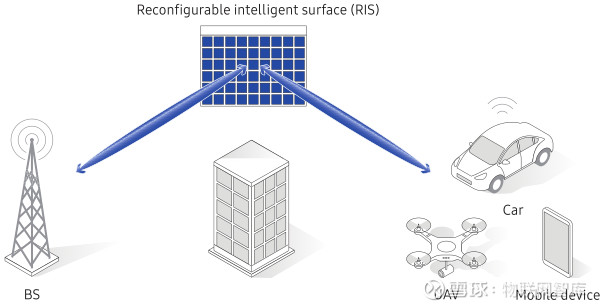
(2)轨道角动量(OAM)
1992年,科学家通过实验证实,光子具有轨道角动量OAM这一基本性质。
OAM通信研究的核心,是把轨道角动量这一尚未利用的电磁波参数用于通信。OAM是电磁波在传播方向上在垂直平面上表示相位旋转的特性,相位旋转的次数称为OAM模式。不同的OAM模式相互正交,在同一频点上可传输多路正交信号,从而提升频谱效率和信道容量,这就是OAM复用技术:
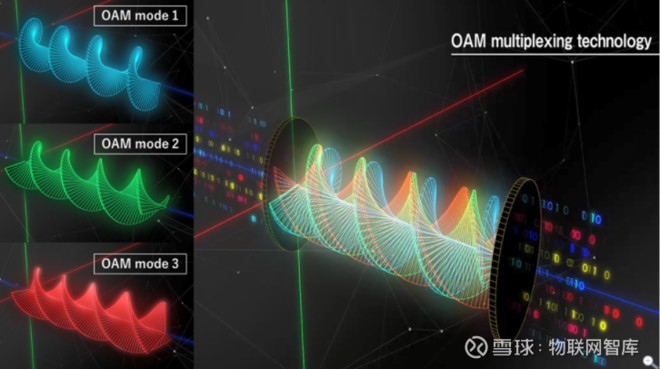
2018年5月,日本NTT已经利用轨道角动量(OAM)多路复用在全球首次成功演示了100Gbps无线传输,实验室设计了OAM-MIMO复用传输。结果表明,系统能够显著提升传输容量。
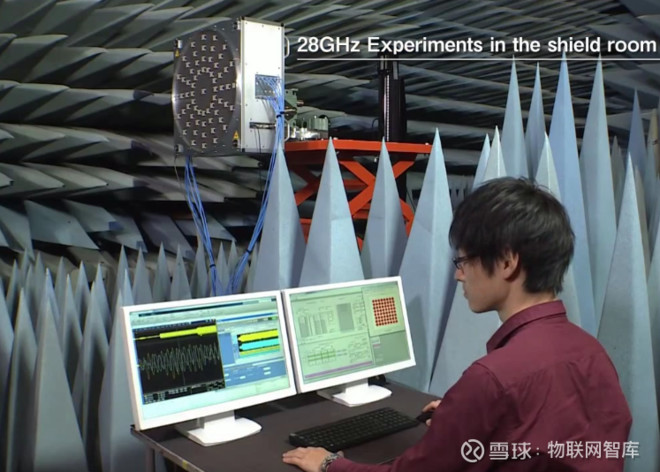
这项技术看起来还是相当有前途的,但是实验室只进行了十米的传输实验,实际的实施和操作肯定还有很多的问题需要解决。
全双工技术
5G NR引入了动态TDD技术,提高双工灵活性,从而可以根据流量来动态调整下行链路和上行链路之间的时隙比率。
全双工技术可能会在6G得到应用,从而解除传统双工机制对收发信机频谱资源利用的限制,有助于进一步提高频谱效率(理论上同时同频全双工可提升一倍的频谱效率)和系统的灵活性。
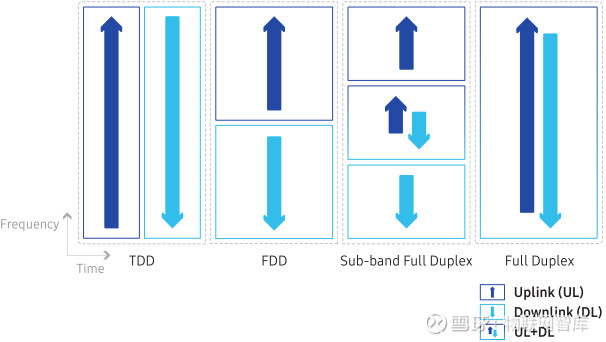
上下行链路同时同频传输信号,会存在严重的自干扰和交叉干扰问题,需要在设备和网络部署时采取一定的干扰抑制和消除手段。
频谱共享技术
本着开源与节流并重的思想,如何更加充分地利用现有的频谱资源就显得格外重要(特别是在低频段)。
于是,动态频谱共享(DSS)技术闪亮登场。
它可以让不同制式的网络共享使用相同的频谱资源,相当于频谱和制式解耦合。比如,目前动态频谱共享技术已经可以在4G和5G之间动态分配频谱。
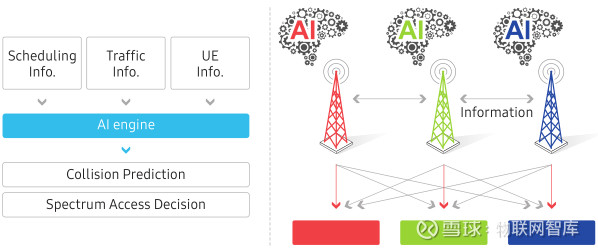
6G时代,动态频谱共享技术显然还要在原有基础上继续发展,也许会被称为“智能”频谱共享技术。
网络拓扑结构的演进
网络拓扑演进方面的一个显著趋势,就是使用非地面网络NTN,例如卫星和HAPS,即使在没有地面网络的地方也能提供覆盖。
NTN技术的实现,需要考虑地面网络所没有的新方面,包括对移动小区的支持、数百公里大的小区、较大的传播延迟、NTN的高速移动导致的较大多普勒频移和较大路径损耗等。
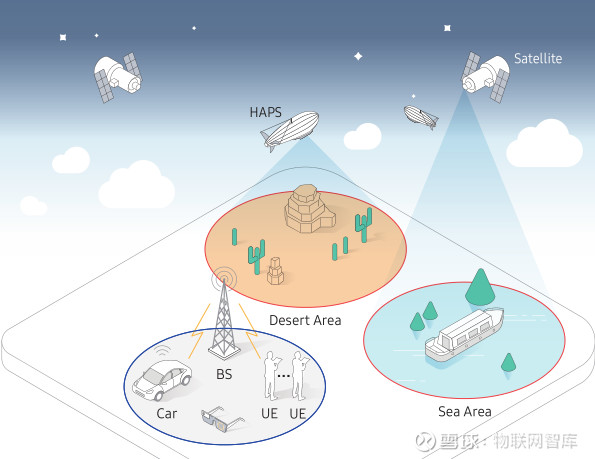
目前尚处于开发支持NTN的技术初始阶段,3GPP R17将会完成对NTN网络的第一阶段支持,让我们拭目以待吧。
PS:现阶段想要多了解一些NTN的内容,建议参考3GPP TR38.811。
AI技术
3GPP 5G标准已经在核心网中引入了NWDAF网络功能,对网络进行数据收集和分析。相信该功能在后续版本中持续演进,之后3GPP也会对无线侧进行相关的技术研究。到了6G时代,AI技术的应用将会无处不在。
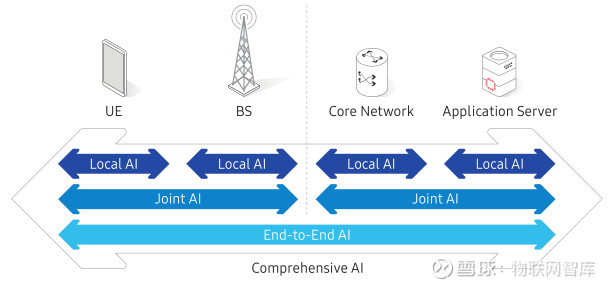
举例来说,本地AI技术给信道编码研究提供了一种全新的解决方案,使其不再依赖传统的编码理论进行设计,通过学习、训练、搜索就可以找到适合当前传输环境的最佳的调制编码方式。联合AI的一个例子是基于预测的切换优化,而端到端的AI可以识别或者说预测网络运行中的异常并提出纠正方案。
后话:现在谈6G,是不是太早了?
5G商业化尚处于起步阶段,现在开始准备6G正是时候。因为从开始研究到新一代通信技术商业化,通常需要10年左右的时间。
早在2019年3月,芬兰就举办了全球第一届6G峰会,来自各国的通信专家们商议拟定了全球首份6G白皮书:6G泛在无线智能的关键驱动与研究挑战。
在过去的一年,世界各国纷纷制定了本国6G的发展规划,并付诸实施。
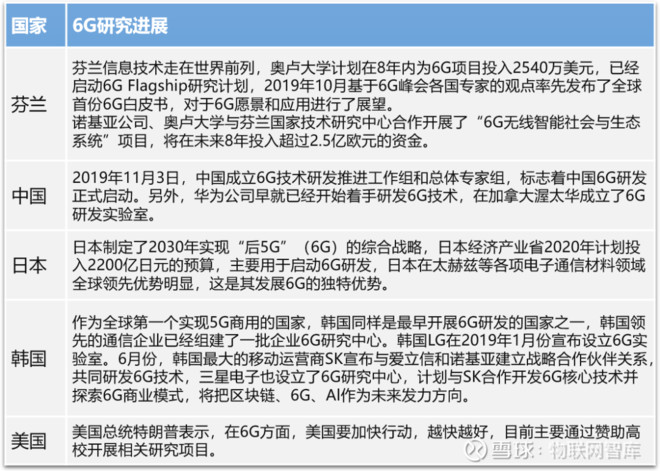
世界各国的6G研究进展
此前有报道称,韩国5G网络实际传输速率仅为4G的三倍多,远远低于20倍的标准。由此可以看出,全球范围内的首要任务,还是先把5G的潜力充分激发出来,让企业和个人充分感受到5G所带来的真实价值。否则,空谈6G是没有任何意义的。
如果用一句话总结,那就是——
既要仰望星空(6G),也要脚踏实地(5G)
作者:物联网智库
链接:https://xueqiu.com/2596166299/162037782
来源:雪球
著作权归作者所有。商业转载请联系作者获得授权,非商业转载请注明出处。
风险提示:本文所提到的观点仅代表个人的意见,所涉及标的不作推荐,据此买卖,风险自负。